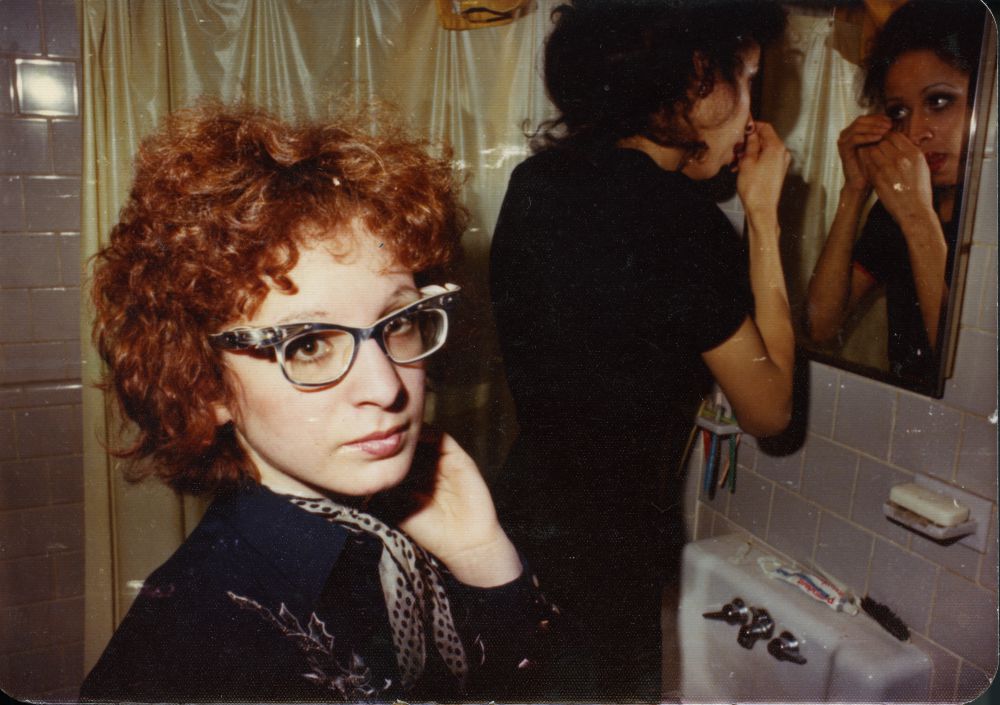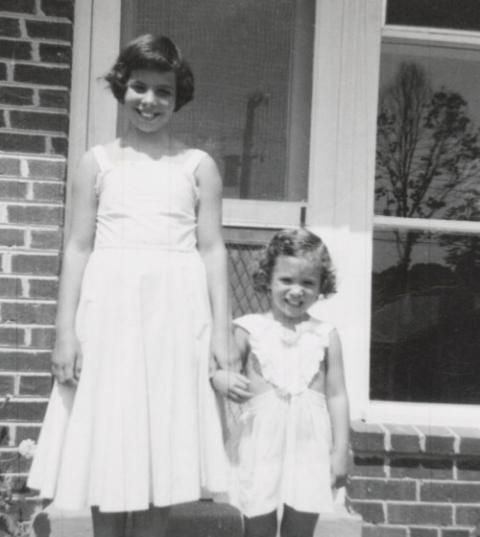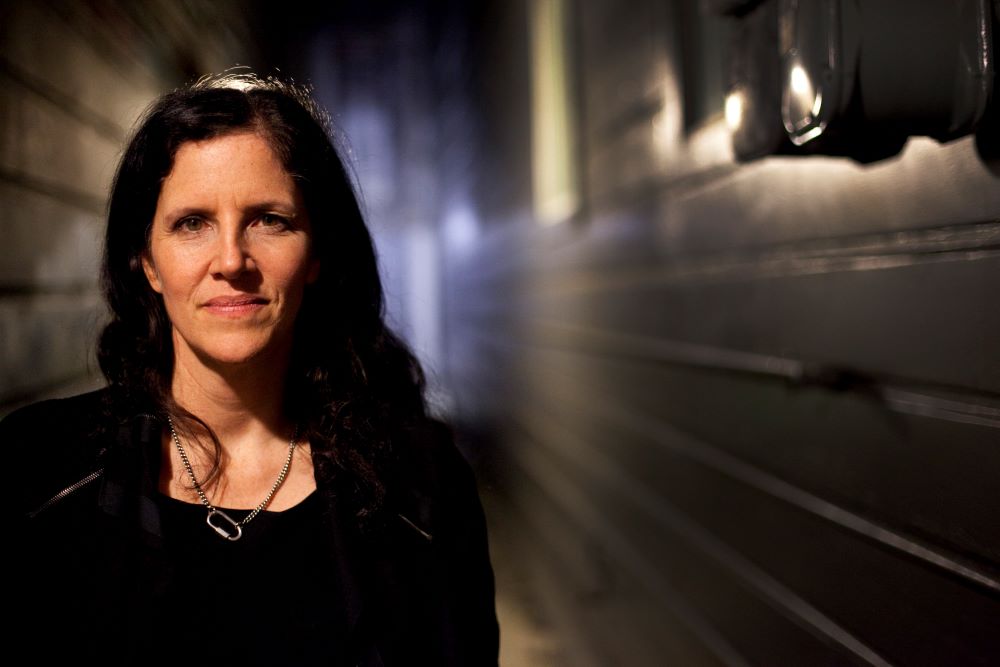
The artist and activist Nan Goldin is shown with a roommate in Boston in this undated photo. (Courtesy of Nan Goldin)
Although the Medici family name usually conjures images of Florence, in 1402, Giovanni di Bicci de Medici opened a bank in the floating city of Venice. This third branch of the Medici Bank, which focused on expanding trade in the burgeoning Italian city, helped spur the family's wealth and allowed them to have immense political power across Europe.
The clan would also become famous for becoming something like an official sponsor of the Renaissance. They took future icons like Michelangelo, Botticelli and Leonardo da Vinci under their wing and funded scientific and medical research.
But Medici patronage came with a price, as the artists they sponsored also served as spokespeople for the family. They commissioned statues and paintings that acted as advertisements, and propaganda even, sharing the values and virtues the Medici would claim to possess and use to gain immense power.
Few people dared to publicly criticize the Medici; escaping their influence was impossible. It's hard not to think about the Medici while watching "All the Beauty and the Bloodshed," the Academy Award-nominated documentary by Laura Poitras, that traces artist Nan Goldin's life as she battles the Sackler family. The Sacklers' contributions to modern art through their philanthropy are as undeniable as their responsibility for creating and profiting from the countless deaths provoked by OxyContin, the painkiller manufactured in their Purdue Pharma.
"Dopesick," the 2021 miniseries starring a phenomenal Michael Keaton, paints a clear picture of how Oxy, as it's often called, was advertised as a drug that didn't lead to addiction, when in reality, abuse and dependence are among its most common side effects. Like the Medici, the Sackler name could be found splattered across every major museum in the world, where their monetary contributions bought entire wings named after them.

Nan Goldin, right, holds hands with her sister, Barbara. Goldin's sister died by suicide at 18. (Courtesy of Nan Goldin)
Goldin's own work must have been housed within a Sackler wing at some point, after all, she's been a prolific creator since debuting in 1973. Her relationship with the name took a turn in 2017 when she revealed she was recovering from Oxy abuse. The drug was prescribed for wrist pain, but it triggered an addiction that almost killed her.
Keen on preventing others from similar experiences, Goldin created Prescription Addiction Intervention Now (P.A.I.N), an advocacy organization with various objectives including outreach through social media and creating awareness of how the Sackler family was being absolved of their sins, via the exorbitant alms they contributed to places like the Louvre and the Metropolitan Museum of Art in New York City.
Poitras' expertly crafted documentary delivers a fascinating and heartbreaking juxtaposition: We see parallel storylines, one of the free-spirited Goldin who becomes a professional artist, survives domestic violence and sees some of her dearest friends die during the peak years of the AIDS epidemic. In the other timeline, the older Goldin takes the lessons learned from being a survivor to raise awareness during an expanding epidemic.

The filmmaker Laura Poitras created "All the Beauty and the Bloodshed," the Academy Award-nominated documentary that traces artist Nan Goldin's life she battles the Sackler family. (Courtesy of Jan Stürmann)
The director falls in love with her subject as she crafts a piece of work completely awestruck by Goldin. We often hear Goldin narrate her life, while Poitras shows us the work she created during the time she speaks about. It's like going on the most intimate tour exhibit of all time.
A huge fan of Renaissance art, five centuries ago, Goldin would have been under Medici patronage. She has described herself as "obsessed with the ritual and the beauty of Catholic art," using light, perspective and layers to make us feel as if we're witnessing certain emotions for the first time.
Her photographs are the rare kind of work that only continue to gain depth as the years go by. Entire lifetimes are conveyed in images like "Valérie in the light, Bruno in the dark, Paris, 2001," where a man and woman, standing physically in the same room, couldn't be spiritually further from each other.
Advertisement
Goldin's pursuit of justice by changing public perception and challenging some of the most powerful people on the planet is inspiring; she turns activism into an art form. You might remember the 2019 protest at the Guggenheim, where P.A.I.N organized a surprise demonstration that took over the spiraled building.
For details on how things unfolded, skip Google and Wikipedia, and instead watch "All the Beauty and the Bloodshed," Poitras' love song to an artist that continues to defy expectations and push boundaries.
Last year, it became one of the few documentaries to win the Golden Lion, the top prize at the Venice Film Festival, the same city where the Medici Bank closed one of its last branches in the late 17th century after their vertiginous decline, a metaphor of divine foreshadowing.








